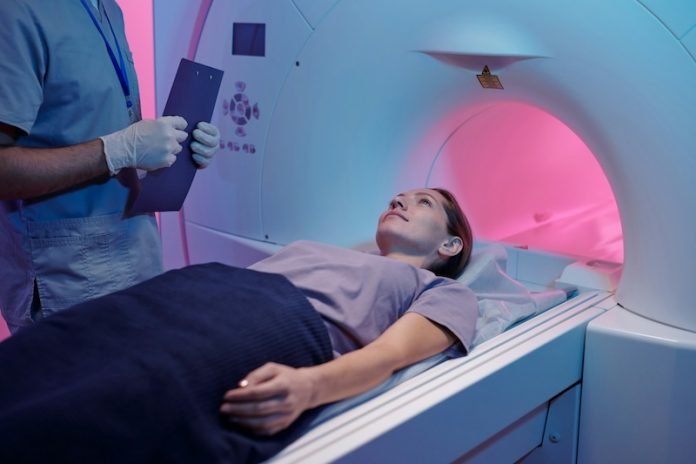
Detecting pancreatic cancer is tough because the pancreas is located deep inside the abdomen and varies in position from person to person. This makes pancreatic tumors hard to spot until it’s often too late for effective treatment.
However, researchers at the Weizmann Institute of Science have developed a new magnetic resonance imaging (MRI) technique that could make pancreatic tumors more visible in scans.
This research, published in the journal Science Advances, builds on a method similar to glucose tolerance tests used for detecting diabetes. The new MRI method tracks how cells metabolize glucose.
Almost a century ago, Nobel Prize-winning scientist Otto Warburg discovered that tumors consume much more glucose than most healthy cells. He also found that this glucose often turns into lactate in cancer cells, a process now known as the Warburg effect.
By using MRI to track and map the metabolic products that arise from the Warburg effect, the new method could help identify pancreatic cancer early. This could lead to earlier detection, better treatments, and improved outcomes for patients.
To develop this method, scientists used rodent models of aggressive pancreatic cancer in Prof. Lucio Frydman’s lab. They collaborated with Prof. Avigdor Scherz to create an innovative approach.
They used a chemically modified glucose with a stable hydrogen isotope called deuterium. This glucose was injected into the bloodstream of mice with pancreatic cancer before scanning them.
According to Prof. Frydman, traditional MRI and positron emission tomography (PET) scans are not very good at identifying pancreatic tumors. Traditional MRI scans, even with contrast agents, often fail to clearly show the cancer.
PET scans also have limitations; a positive PET scan doesn’t always mean cancer, and a negative scan doesn’t always mean the absence of cancer.
Currently, standard preventive care for pancreatic cancer involves periodic CT and MRI scans, often with invasive biopsies. However, this combined approach rarely works well.
To address this, Frydman’s team aimed to discover new signs of pancreatic cancer by using MRI to map how normal and cancerous tissues process glucose differently.
Cancer cells don’t fully metabolize glucose. Instead, they stop at an intermediate step, producing lactate, which helps them multiply and spread.
Frydman and his team wanted to use this characteristic to pinpoint where lactate is produced, thus identifying the presence of cancer cells.
However, detecting lactate with conventional MRI is challenging because the water in tissues produces a much stronger signal that overshadows the lactate signal.
To solve this, the team used deuterium-labeled glucose. When cancer cells metabolize this modified glucose, they produce deuterium-labeled lactate, which is easier to detect.
The researchers also developed new experimental and image-processing techniques to boost the sensitivity of MRI. These improvements allowed the MRI to detect even tiny amounts of deuterated lactate, making small tumors visible in scans.
The results were clear: areas with cancer cells lit up brightly in the MRI scans, while healthy tissue remained dark.
Although this research was conducted on animal models, the findings suggest that deuterium MRI could improve early detection of pancreatic cancer in humans.
Prof. Frydman believes that future clinical studies could prove this method to be a lifesaving tool for those at risk of pancreatic cancer.
Even if cancer is not detected early, this technique could help monitor the effectiveness of treatments by measuring how quickly glucose is converted to lactate.
In summary, the new deuterium MRI method developed by Frydman and his team at the Weizmann Institute of Science offers a promising approach for the early detection and treatment of pancreatic cancer.
This method could become a preferred technique for diagnosing hard-to-detect pancreatic tumors and selecting the best treatment options for patients.
If you care about cancer, please read studies about a new method to treat cancer effectively, and this low-dose, four-drug combo may block cancer spread.
For more information about cancer prevention, please see recent studies about nutrient in fish that can be a poison for cancer, and results showing this daily vitamin is critical to cancer prevention.
The research findings can be found in Science Advances.
Copyright © 2024 Knowridge Science Report. All rights reserved.



